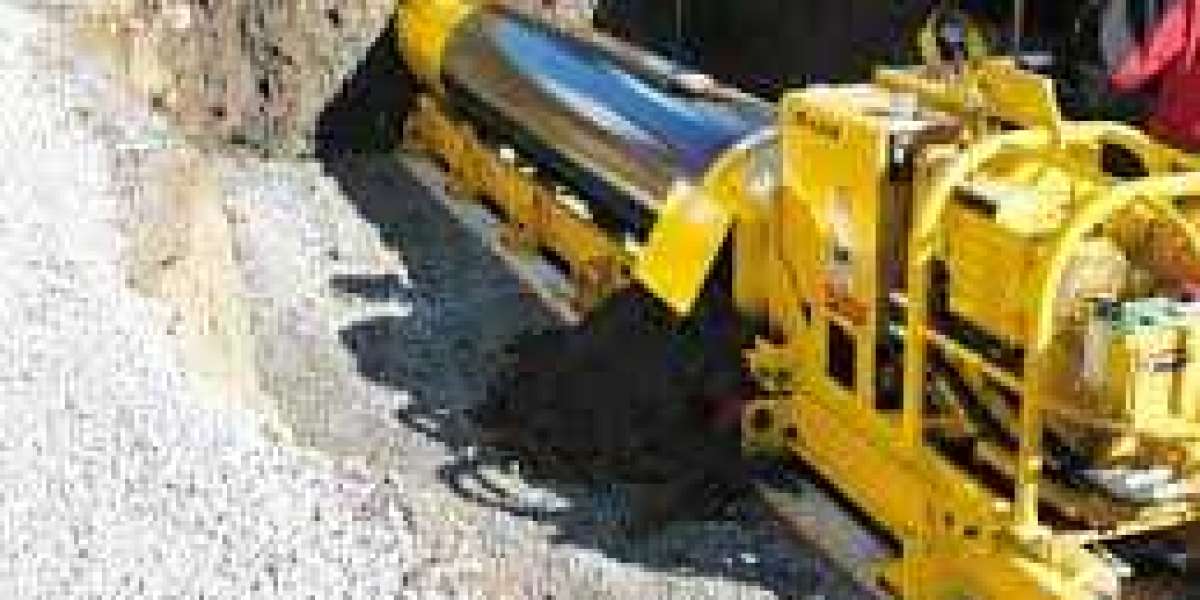Underground utility installation is a critical component of modern infrastructure, enabling the delivery of essential services such as water, gas, electricity, and telecommunications without disrupting surface-level activities. Among the various trenchless technologies available for subsurface utility placement, auger boring equipment plays a vital role due to its precision, reliability, and adaptability in a wide range of soil conditions.
This article explores the workings of auger boring equipment in underground utility installation, detailing its components, operational process, advantages, and typical applications in civil and municipal engineering projects.
What Is Auger Boring Equipment?
Auger boring equipment is a type of trenchless technology designed for the horizontal installation of pipes and conduits beneath roads, railways, buildings, and other surface structures. It uses a rotating helical screw, or auger, housed inside a steel casing to excavate soil and transport it back to the entry pit while simultaneously advancing the casing forward.
This method enables contractors to install large-diameter pipes over significant distances without open trenching, making it ideal for urban environments or environmentally sensitive areas.
Key Components of Auger Boring Equipment
A standard auger boring system includes several core components:
Boring Machine (or Auger Borer): The main engine that drives the rotating auger and pushes the casing forward.
Auger: A helical screw that cuts through the soil and conveys excavated material back to the entry point.
Casing Pipe: A steel pipe pushed into the ground along the bore path. It serves as both a tunnel shield and a conduit for utilities.
Thrust Block or Reaction Frame: Anchors the machine and absorbs the forces generated during boring.
Power Source: Usually hydraulic or electric systems used to power the rotation and thrust of the auger.
Control System: Allows operators to monitor and adjust speed, thrust, alignment, and other parameters during boring.
These components work together to create a controlled and efficient method for pipe jacking and underground utility installation.
The Auger Boring Process: Step-by-Step
1. Site Preparation
Before boring begins, a launch pit (also called an entry pit) and a receiving pit are excavated at the starting and ending points of the planned utility line. These pits allow access for equipment setup, pipe insertion, and removal of excavated material.
2. Machine Setup
The auger boring machine is positioned at the base of the launch pit and aligned precisely with the intended bore path. This alignment is crucial to ensure the casing and utility pipe are installed correctly without deviation.
3. Casing and Auger Insertion
The first section of casing pipe, containing the rotating auger, is placed in front of the boring machine. As the machine rotates the auger, it pushes the casing forward into the soil, simultaneously cutting and removing the excavated material through the auger flight back to the pit.
4. Progressive Boring
Additional sections of casing and auger are added sequentially as the machine progresses along the bore path. This modular approach enables long-distance boring, often exceeding 100 feet depending on ground conditions and pipe size.
5. Pipe Installation
Once the desired bore length is achieved and the casing has reached the receiving pit, the utility pipe (water, sewer, electric, etc.) can be inserted into the casing. In some cases, the casing itself serves as the permanent conduit.
6. Completion and Cleanup
After the utility line is installed, the pits are backfilled and restored. In many cases, the entire operation causes minimal surface disruption, which is a key advantage of using auger boring equipment.
Benefits of Auger Boring Equipment in Utility Installation
1. Minimal Surface Disruption
Unlike open trenching, auger boring allows for utility installation without disturbing roads, landscapes, or structures above. This reduces restoration costs and traffic disruptions, especially in urban or heavily populated areas.
2. Versatile Application
Auger boring equipment can operate in various soil types, including clay, silt, and sandy soils. It is particularly effective in stable ground conditions where accurate, horizontal alignment is critical.
3. Cost-Effective for Short to Medium Runs
While directional drilling may be more suitable for curved paths or long distances, auger boring is often more economical for straight, short- to mid-range installations of large-diameter pipes.
4. Environmentally Friendly
By limiting surface excavation and spoil disposal, auger boring reduces the environmental footprint of underground utility projects. It is also quieter and produces less dust and debris compared to traditional excavation.
5. Improved Safety
With fewer workers exposed to open trenches and heavy equipment on the surface, the use of auger boring enhances job site safety and reduces the risk of accidents.
Typical Applications
Auger boring equipment is widely used across various sectors, including:
Municipal Utility Installation: For water, sewer, and storm drain lines under roads and sidewalks.
Telecommunications: Laying fiber optic and communication cables under urban infrastructure.
Gas and Oil Pipelines: Installing pipelines beneath railways or sensitive environments without surface disruption.
Industrial Facilities: Creating underground connections between buildings or process areas.
These applications demonstrate the flexibility and reliability of auger boring equipment in meeting modern utility installation needs.
Challenges and Limitations
Despite its advantages, auger boring is not suitable for all conditions. It has limitations in:
Highly variable or unstable soils (e.g., cobbles, boulders, loose sand)
Long-distance or curved bores
Projects requiring real-time steering or deviation correction
In such cases, alternatives like horizontal directional drilling (HDD) or microtunneling may be more appropriate.
Conclusion
Auger boring equipment remains a cornerstone of trenchless technology in the underground utility industry. Its ability to install large-diameter pipes efficiently, safely, and with minimal surface disruption makes it an essential tool for civil contractors and utility providers.



